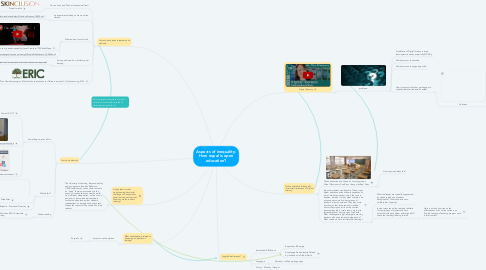
1. Unconscious biases in teachers and students
1.1. Do you have any? Take a (controversial) test!
1.1.1. Project Implicit
1.2. An experimental study on bias in online classes.
1.2.1. https://siepr.stanford.edu/sites/default/files/publications/18-055.pdf
1.3. Where does it come from?
1.3.1. The surprising neuroscience of gender inequality | Janet Crawford | TEDxSanDiego
1.3.2. http://faculty.washington.edu/agg/pdf/Gwald%26Krieger.CLR.2006.pdf
1.4. Among students: how it affects peer learning.
1.4.1. https://services.google.com/fh/files/misc/unconscious-bias-in-the-classroom-report.pdf
1.5. ERIC - EJ1067526 - Implicit Bias and First Name Stereotypes: What Are the Implications for Online Instruction?, Online Learning, 2015
2. What challenges are related to inequality in openness in learning?
2.1. Access to online devices
2.1.1. Paywalls
3. Functional diversity
3.1. Some things we can all do
3.1.1. 20 Tips for Teaching an Accessible Online Course | DO-IT
3.1.2. https://www.youtube.com/watch?v=_KBhUORLB20&feature=youtu.be
3.1.3. How to design visual learning resources for neurodiverse students
3.2. What is this?
3.2.1. Disabilities
3.2.2. Wikipedia - Functional Diversity
3.3. Further reading
3.3.1. Case and Davidson (2011) Accessible Online Learning
4. A hypothesis is that open-leanring has similar challenges of inequality as other learning environmnet. What can we learn about learning?
4.1. The University of Learning, Beyound quality and competence. Bowden & Marton, (1998) could teach us about how to create an "open" learning environment in the sence of creating space to see the world from different perspectives, on line or not and how to become better teachers to facilite the deep leaning fom students, independent on background and context. Always the context of the course has to be relevant.
5. Digital illiteracy
5.1. problems:
5.1.1. Prodblems of Digital litteracy in large learning environemts, especially MOOCs
5.1.2. Minimal access to teachers
5.1.3. Minimal access to supporting staff
5.1.4. How is contact with other, perhaps more digitally litteratre students, handled?
5.1.4.1. Solutions
5.1.4.1.1. include supporting staff
5.1.4.1.2. Have specific teaching hours, perhaps with TA, to help with technical assistance
5.1.4.1.3. In general, sett upp a supporting strucutre that takes these challenges on a systemic rather than individual level.
6. Online education & Inequality -Structural dimensions of Digital Literacy...
6.1. Online education and the poor/ minority groups Virtual Classrooms Can Be as Unequal as Real Ones
6.1.1. How can we address this?
6.2. Broad recruitment and Equality: Today, many higher education authorities are supposed to aim at broad recruitment; this is the case in Sweden, but also in many other countries. As a consequence, we find new groups of students at our universities. They may come from homes that lack academic tradition and/or they may enroll in online courses because they live in rural areas, only to give two examples of new groups of students. What challenges are typically experienced by students with non-academic backgrounds? What can be done to facilitate their learning?
6.2.1. What challenges are typically experienced by students with non-academic backgrounds? What can be done to facilitate their learning?
6.2.2. In what ways can online teaching facilitate for new groups of students who are unfamiliar with both higher education AND the online teaching/learning format?
6.2.2.1. Here is a study from Iran on the effectiveness of an online course in an English Language Teaching program set in a rural context.
7. Supply-Side Hierarchy?
7.1. Institutional Affiliations
7.1.1. Reputation & Prestige
7.1.2. Knowledge Predominantly Defined by institutions in Global North
7.2. Language
7.2.1. Dominant vs Minority languages
